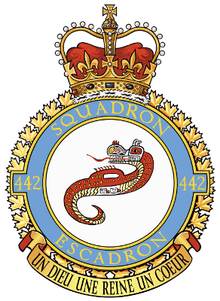Haietlik

The haietlik ("lightning serpent") is a lightning spirit and legendary creature in the mythology of the Nuu-chah-nulth (Nootka) people of the Canadian Pacific Northwest Coast. According to legend, the haietlik was both an ally and a weapon of the thunderbirds, employed by them in the hunting of whales. They are described as huge serpents with heads as sharp as a knife and tongues that shoot lightning bolts. A blow from a haietlik would injure a whale enough that the hunting thunderbird could carry it away as prey.[1] The haietlik was variously described as dwelling among the feathers of the thunderbirds to be unleashed with a flap of the wings,[2] or inhabiting the inland coastal waters and lakes frequented by the Nuu-chah-nulth people.[3]
Cultural Significance
Because thunderbirds were said to use the haietlik essentially as harpoons, the lightning serpent was commonly associated with whaling in Nuu-chah-nulth culture. Whalers who carried the skin of this mythological creature in their canoe were said to have luck in whaling.[3] British sailors visiting the Pacific Northwest in 1791 reportedly saw representations of the haietlik painted on the sides of canoes.[4] Images of the haietlik also appear in petroglyphs on the coast of British Colombia and as decorations on whaling harpoons.[5]
The haietlik also served a ceremonial purpose in Nuu-chah-nulth rituals. One part of the ceremony for a marriage between a chief's daughter and the son of another tribe involved men of the groom's tribe arriving in a haietlik formation - their canoes formed up in a line, moving in a zig-zag pattern around the cove - before landing and distributing blankets as gifts to every member of the bride's tribe.[6] Another marriage ceremony involved dancers in haietlik masks entering the house of the bride's family.[7] The Nuu-chah-nulth wolf ritual - an initiation ceremony in which initiates were performatively kidnapped by men in wolf masks, taken into the woods, and taught important dances - also referenced the haietlik. One of the masks used in this ceremony simultaneously represented both a wolf and a lightning serpent,[8] and one of the dances taught to the initiates was a thunder dance in which a haietlik-dancer enters a house through the roof.[9]
The Canadian Forces 442 Transport and Rescue Squadron badge features a red haietlik in a Northwest Coast art style.[1]
Notes
- 1 2 Air Force Public Affairs / Department of National Defence (June 2007). "442 Transport & Rescue Squadron General". Archived from the original on 1 October 2007. Retrieved 2008-12-13.
- ↑ Drucker 1951, p. 155.
- 1 2 Rose (2000), p. 166.
- ↑ Drucker 1951, p. 83.
- ↑ Newcombe 1907, p. 7.
- ↑ Drucker 1951, p. 294.
- ↑ Sapir and Swadesh 1939, p. 137.
- ↑ Drucker 1955, p. 176.
- ↑ Sapir and Swadesh 1939, p. 131.
References
- Drucker, Philip (1951). The Northern and Central Nootkan Tribes. Smithsonian Institution, Bureau of American Ethnology.
- Drucker, Philip (1955). Indians of the Northwest Coast. McGraw-Hill Book Company, Inc.
- Newcombe, Charles Frederick (1907). Petroglyphs in British Columbia. Reprint from Victoria Daily Times, September 7th, 1907.
- Rose, Carol (2000). Giants, Monsters & Dragons: An Encyclopedia of Folklore, Legend, and Myth. W.W. Norton & Company, Inc. p. 166. ISBN 0-393-32211-4.
- Sapir, Edward and Morris Swadesh (1939). Nootka texts: tales and ethnological narratives, with grammatical notes and lexical material. University of Pennsylvania.